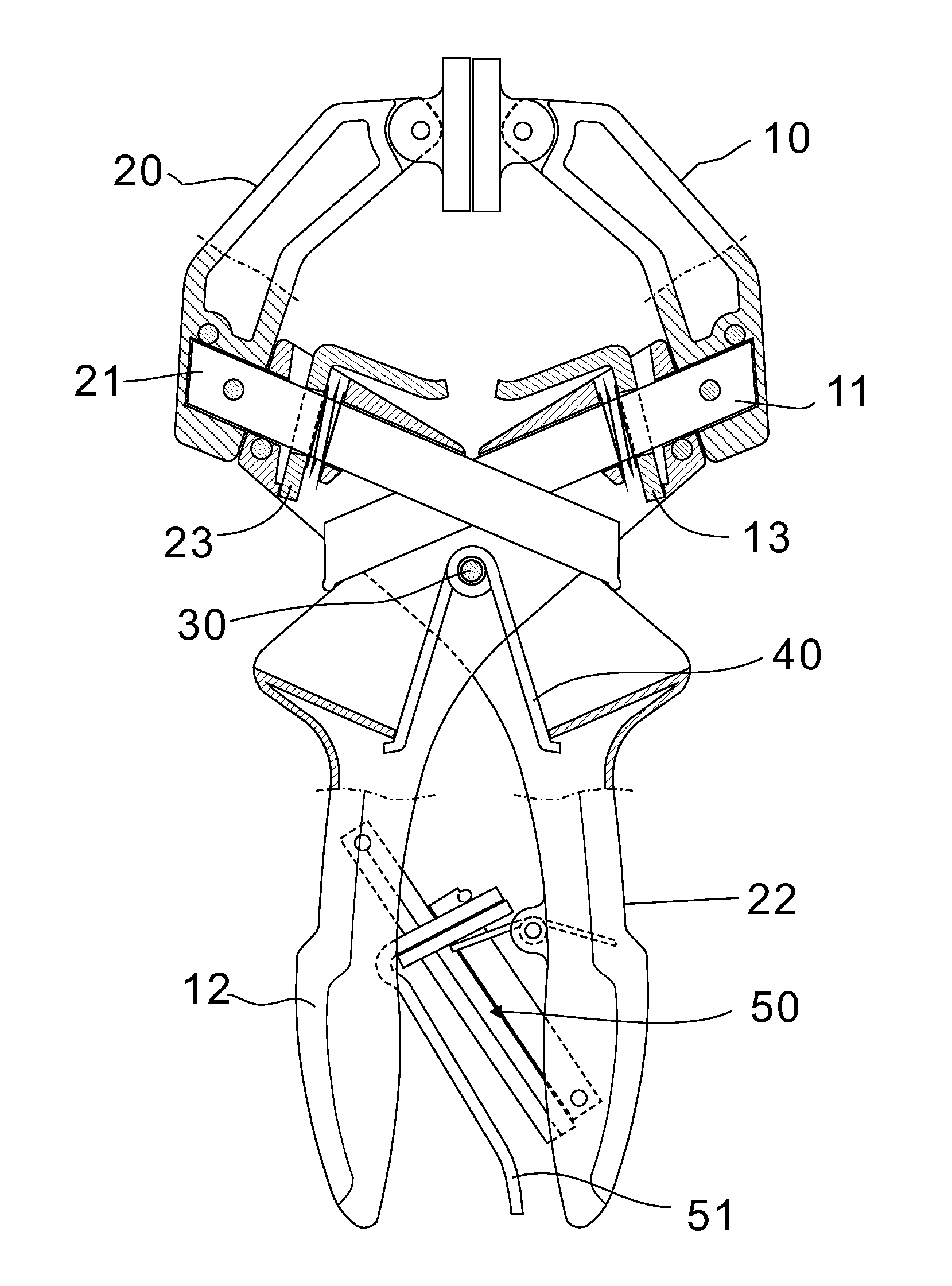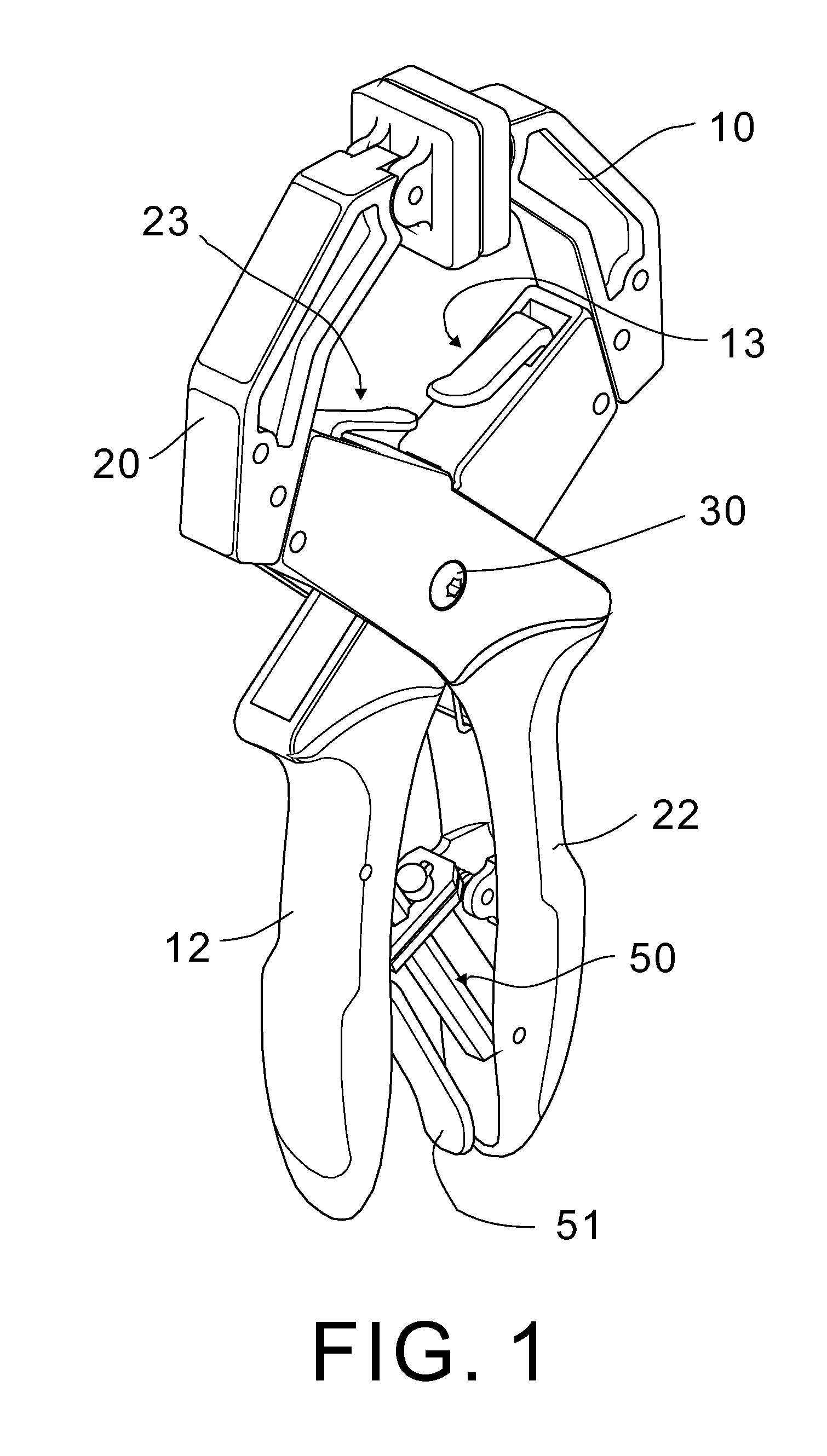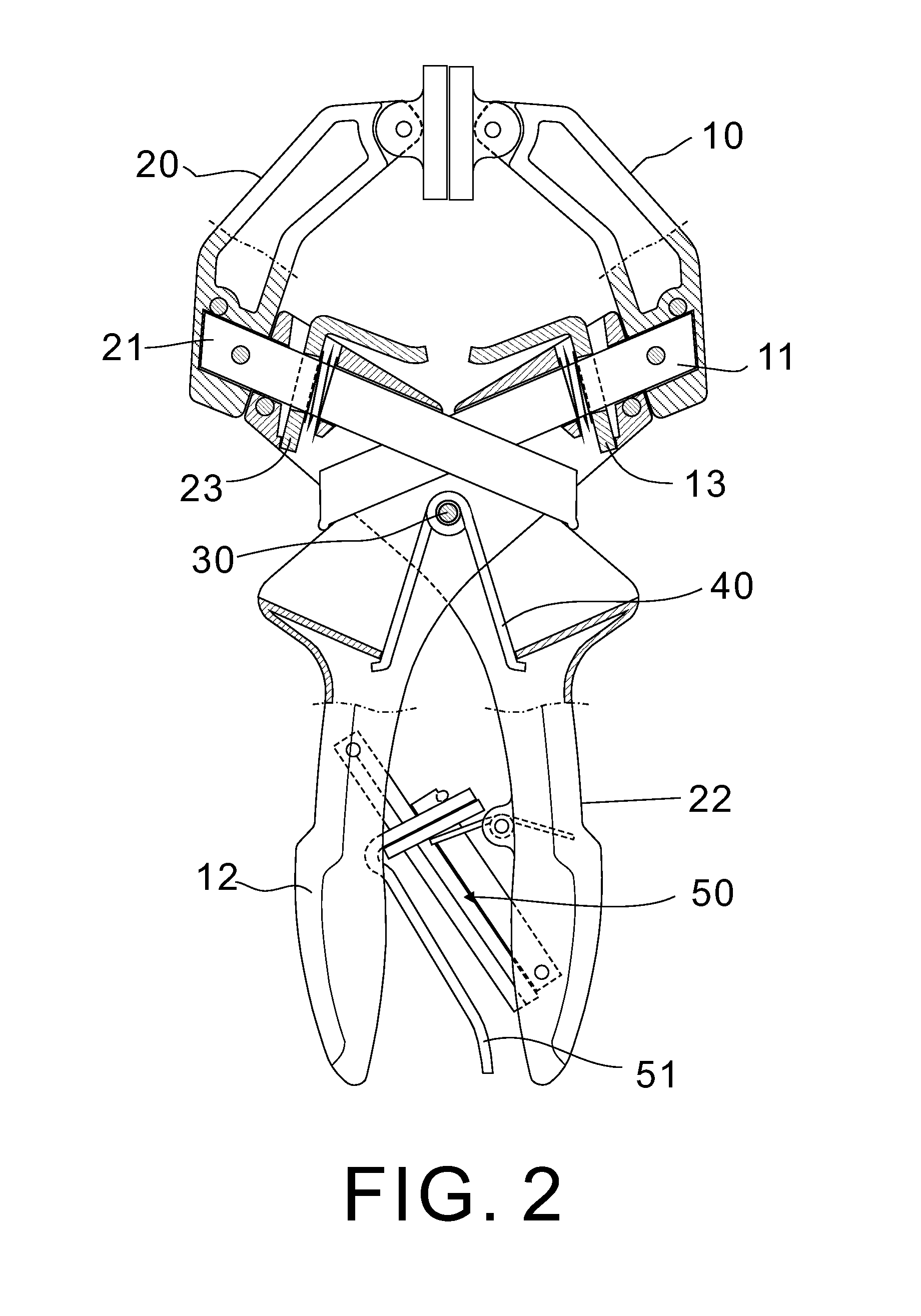Locking pliers with one or two slide bars each secured to a stationary jaw carrier
- Summary
- Abstract
- Description
- Claims
- Application Information
AI Technical Summary
Benefits of technology
Problems solved by technology
Method used
Image
Examples
Embodiment Construction
[0017]Referring to FIGS. 1 to 7, a locking pliers in accordance with the invention comprises the following components as discussed in detail below.
[0018]A first stationary jaw carrier 10 has a pivotal jaw 14 at one end. A second stationary jaw carrier 20 has a pivotal jaw 24 at one end. A bent first handle 12 and a bent second handle 22 are joined at a pivot joint 30 which is mounted with a torsion spring 40. The spring 40 has both ends anchored in two inner members of the first and second handles 12, 22 respectively so that the first and second handle 12, 22 can be resiliently pressed together.
[0019]A self-adjusting locking unit 50 is provided between the first and second handles 12, 22 and comprises a torsion spring 52 mounted on an inner surface of the second handle 22, a first bar 54 having one end pivotably secured to the inner surface of the second handle 22, a release lever 51 mounted on the other end of the first bar 54, a plate 53 urged between the other end of the spring 5...
PUM
| Property | Measurement | Unit |
|---|---|---|
| Distance | aaaaa | aaaaa |
Abstract
Description
Claims
Application Information
 Login to View More
Login to View More - R&D
- Intellectual Property
- Life Sciences
- Materials
- Tech Scout
- Unparalleled Data Quality
- Higher Quality Content
- 60% Fewer Hallucinations
Browse by: Latest US Patents, China's latest patents, Technical Efficacy Thesaurus, Application Domain, Technology Topic, Popular Technical Reports.
© 2025 PatSnap. All rights reserved.Legal|Privacy policy|Modern Slavery Act Transparency Statement|Sitemap|About US| Contact US: help@patsnap.com



